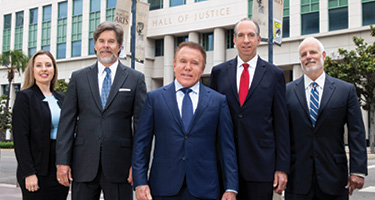Jury trials are a race to credibility! In a civil suit, more often than not, the defense has a head start because the plaintiff is asking for money. Credibility starts with the lawyer and ends with the client. Therefore, whether it is for deposition or trial, witness preparation is one of the most important, and often most neglected, aspects of depositions and trial work.
The three main considerations for preparing the plaintiff witness:
- Telling the right story, which comes from getting to know your client on a personal level
- Arming the witness with his own truth for each issue in the case. That is, having the witness address the issue in his own words so they are confident in their answers
- Reliving the experience, rather than just remembering the facts, when telling the story. This third consideration is often the most difficult and is the focus of this article.
Neuroscience, neuropsychiatry, and neurobehavioral studies show that the closest we can get to the concept of “truth” is the emotional reaction a human being experiences given a particular stimulus. For example, if a person is faced with an attack by an aggressive German Shepherd, the likely emotional reaction is fear. However, if the storyteller has a joyful or comical description of the event, the listener is not allowed to experience the story because it is delivered with the wrong emotion. Proper emotional congruence and delivery are found through re-experiencing the event rather than just citing facts from memory.
The starting point for finding the proper emotional congruence is visualization. If you ask someone to tell you exactly how many windows they have in the front of their house, chances are they will look away from you as they are visualizing the front of their house, counting the windows. This is because every memory we have is stored as pictures and images in our minds. Therefore, when preparing a witness, I teach them to visualize every answer. We start by having the witness tell a story of happiness. The reason we request stories of happiness is so that the unconscious mind does not block any unpleasant memories. If we start with the story that caused the injury, sometimes the witness will unintentionally block out portions of the story which hinders the learning process.
The witness is instructed to close his eyes, see the images in his mind, and re-tell the story as if they are actually there, reliving the story. The witness is instructed on how to create space and use dialogue to help the witness transport back to the time of the story in their mind. When this is accomplished, the witness will start talking in the present tense, which is the indicator that they are reliving the story rather than just remembering facts. Once the witness masters the transport back in time, we move on to the case story, followed by the story told with their eyes open.
Four rules when answering a question:
- Make sure you understand the question
- Ask yourself what image do I need to access to answer the question
- Access the image and answer the question from the image
- Close the image and turn back to the questioner to show you are ready for the next question.
I make sure the witness understands he must do this with every question. For example, I ask the witness what they had for breakfast. When they tell me, they should be looking into their memory and visualizing the breakfast before they answer. This helps make the point I want a visualization for every answer, regardless of whether they need to search their memory to answer the question.
When a witness masters this, their stories are more credible. Visualizing the event while describing it not only helps the witness find the proper emotion, the listener will consciously or unconsciously realize that the storyteller is recalling the event in their mind. Humans are used to people communicating this way. For example, if you ask a stranger for directions and the stranger looks off to the right and starts telling you the route as he is seeing it in his mind, you instinctively know that he is telling you the truth. Therefore, the jurors will pick up on this, possibly not even realizing it. They just instinctively know the witness is credible.
By utilizing this technique, I was able to win on a liability disputed crash with a 20-year-old college student that was testifying differently than four safety men for the railroad. She was basically going against four professional witnesses. The results were a record-setting jury verdict and four jurors telling me after the trial that it was obvious my client was truthful. One of them picked up on the visualization; three just instinctively knew.
In a recent consulting job, I was faced with interviewing a young man for a mediation video. He was severely burned over most of his body and lost three friends in the same fire. In his previous attempts, he had been unable to show any emotion when telling his story. By utilizing these techniques, I was able to get him to re-live the fire, re-live the painful treatment, and use dialogue when recounting the conversations when he learned his friends did not make it. There was not a dry eye in the room as I witnessed the most powerful testimony I have ever experienced.
One of the most fascinating things about the visualization technique is that the listener also sees the image the witness is describing. This allows the audience to see the truth, rather than just listening to the facts.
I can confidently say that the visualization technique is one of the most powerful tools in my trial lawyer arsenal, and they are methods that I have refined over several years. I owe a great deal of gratitude to Dan Ambrose of Trojan Horse, who introduced me to this technique that I have tailored and developed to fit my consulting, teaching, and litigating style. It is utilized in all of my deposition and trial preparations, as well as the consulting work I do for Trial Structure.
Kyle Sherman is a trial consultant with Trial Structure. For the last 15 years, Kyle has been concentrating on personal injury litigation in Lafayette and throughout Louisiana and handles small claims as well as large cases, with recoveries ranging from thousands of dollars to multi-million dollars. The Trial Structure team is passionate about teaching attorneys how to maximize their case value; and since 2015, has assisted clients in winning over $100M in verdicts and settlements.




















